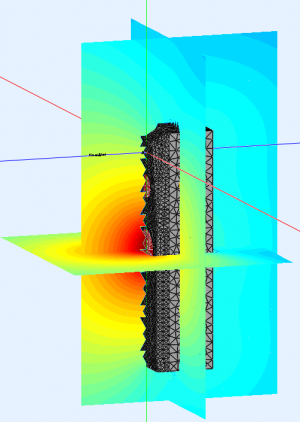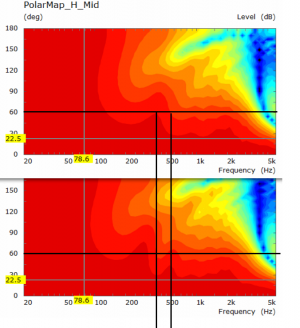Vineethkumar01
Well-Known Member
Hi
Have anyone auditioned these new Indiq speakers:
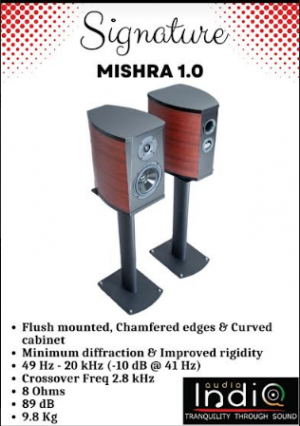
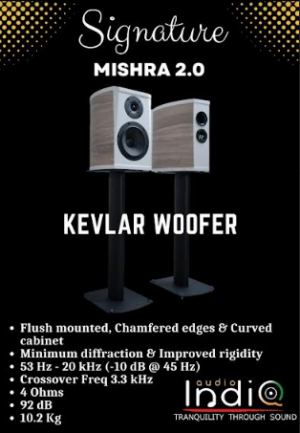
Let me say why I am interested in them. Because they follow a (golden reference) 2 way bookshelf design philosophy (except maybe a teensy bit about a protruding edge at the top. But that may not be an issue for this specific tweeter which doesn't radiate as wide to edges compared to some others) ..
Flush mounted edges and chamfered cabinet lowers diffraction not only at high frequencies but also to lower frequencies.. This is because a curved cabinet itself can act as a waveguide with possibility of maintaining directivity control from the top all the down to the midrange frequencies.. (anybody interested may look at Revel M 105 curved cabinet speakers' measurements to see how that happens. Other advantage as they mention is improvement in rigidity and lowered standing wave modes.
(anybody interested may look at Revel M 105 curved cabinet speakers' measurements to see how that happens. Other advantage as they mention is improvement in rigidity and lowered standing wave modes.
Now comes an even more important part, the crossover. In the above ad, it says 2.8 kHz and 3.3kHz in the two speakers?
Why is it important? Because of Kimmosto's c-c rule for crossover..
In short, the rule is that for farfield listening, the center-center driver spacing should be 1-1.4 x wavelength at crossover. This will result in a uniform/even power response in room. For a 1inch tweeter and a 5.25 inch midwoofer, the lowest possible separation is about 130mm between the drivers. From the pics, it looks like 140+ ish mm. This means that per Kimmosto's rule, the ideal crossover frequency range is somewhere in between 2400 - 3400kHz (depending upon the crossover topology and comfort level of drivers in this range). Isn't crossover frequencies in this range exactly the ones we see in the specs..
Then comes the clever tuning frequency of the port, tuned up rather high compared to typical 30 Hz ish tuning small speakers. This may give better sensitivity and cleaner power handling capabilities if designed properly... Expecting thundering bass from small bookshelves by tuning it low is nonsense. Hence this tuning a bit higher approach works..
Due to all these reasons, I am excited about these speakers. Now we are knocking at the doors of designs from world class speaker designers..
I have been the one who started a ruckus in the past on this forum when a saw a relatively bad design philosophy.. Well I will be the first one to appreciate a good trend in speaker design.. Now I am even interested in hearing these speakers..
I wish all the best to their new product line. Hope people will find it sounding good too. Hence I am interested to know feedback from people who have heard in person..
PS: In future, I hope they do something (baffle) like in below pic, but with their curved cabinet. That would be adopting a truly world class design philosophy (Below pic is the actual one designed by Kimmosto )
)
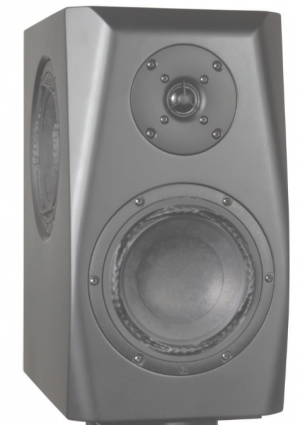
Thanks
Vineeth
Have anyone auditioned these new Indiq speakers:


Let me say why I am interested in them. Because they follow a (golden reference) 2 way bookshelf design philosophy (except maybe a teensy bit about a protruding edge at the top. But that may not be an issue for this specific tweeter which doesn't radiate as wide to edges compared to some others) ..
Flush mounted edges and chamfered cabinet lowers diffraction not only at high frequencies but also to lower frequencies.. This is because a curved cabinet itself can act as a waveguide with possibility of maintaining directivity control from the top all the down to the midrange frequencies..
Now comes an even more important part, the crossover. In the above ad, it says 2.8 kHz and 3.3kHz in the two speakers?
Why is it important? Because of Kimmosto's c-c rule for crossover..
In short, the rule is that for farfield listening, the center-center driver spacing should be 1-1.4 x wavelength at crossover. This will result in a uniform/even power response in room. For a 1inch tweeter and a 5.25 inch midwoofer, the lowest possible separation is about 130mm between the drivers. From the pics, it looks like 140+ ish mm. This means that per Kimmosto's rule, the ideal crossover frequency range is somewhere in between 2400 - 3400kHz (depending upon the crossover topology and comfort level of drivers in this range). Isn't crossover frequencies in this range exactly the ones we see in the specs..
Then comes the clever tuning frequency of the port, tuned up rather high compared to typical 30 Hz ish tuning small speakers. This may give better sensitivity and cleaner power handling capabilities if designed properly... Expecting thundering bass from small bookshelves by tuning it low is nonsense. Hence this tuning a bit higher approach works..
Due to all these reasons, I am excited about these speakers. Now we are knocking at the doors of designs from world class speaker designers..
I have been the one who started a ruckus in the past on this forum when a saw a relatively bad design philosophy.. Well I will be the first one to appreciate a good trend in speaker design.. Now I am even interested in hearing these speakers..
I wish all the best to their new product line. Hope people will find it sounding good too. Hence I am interested to know feedback from people who have heard in person..
PS: In future, I hope they do something (baffle) like in below pic, but with their curved cabinet. That would be adopting a truly world class design philosophy (Below pic is the actual one designed by Kimmosto

Thanks
Vineeth


